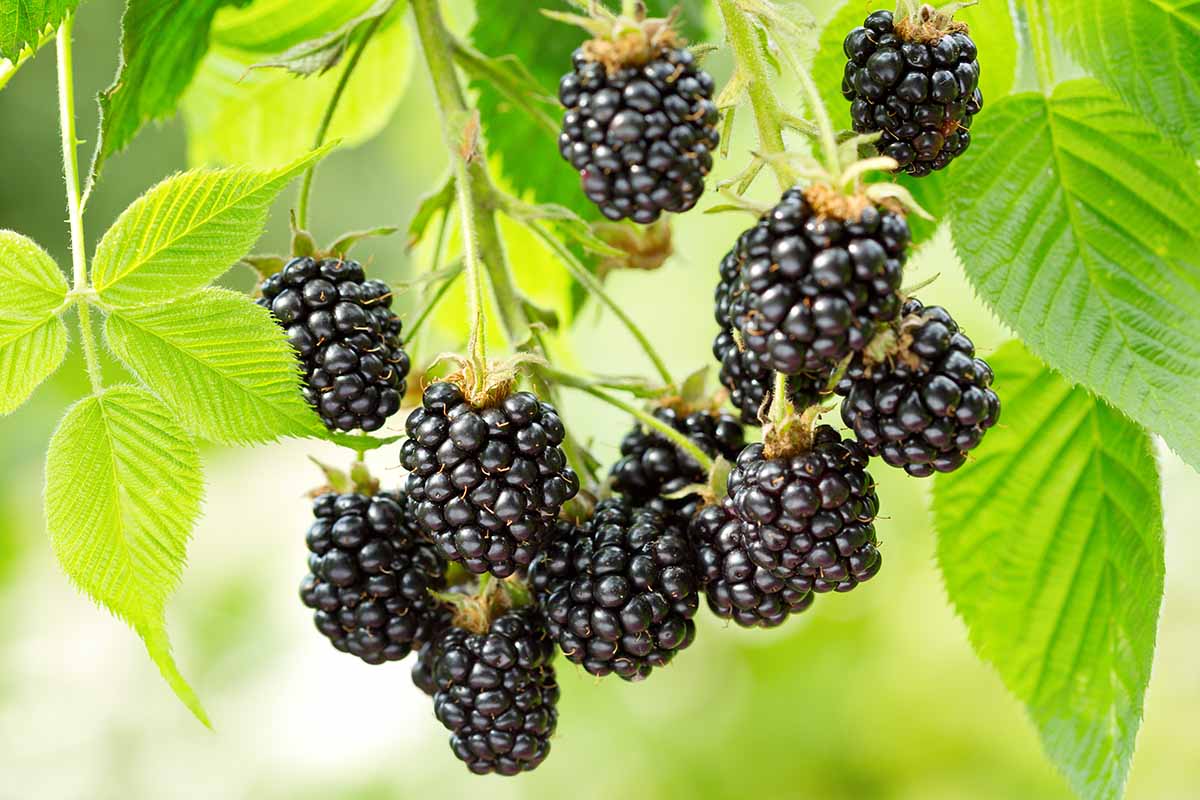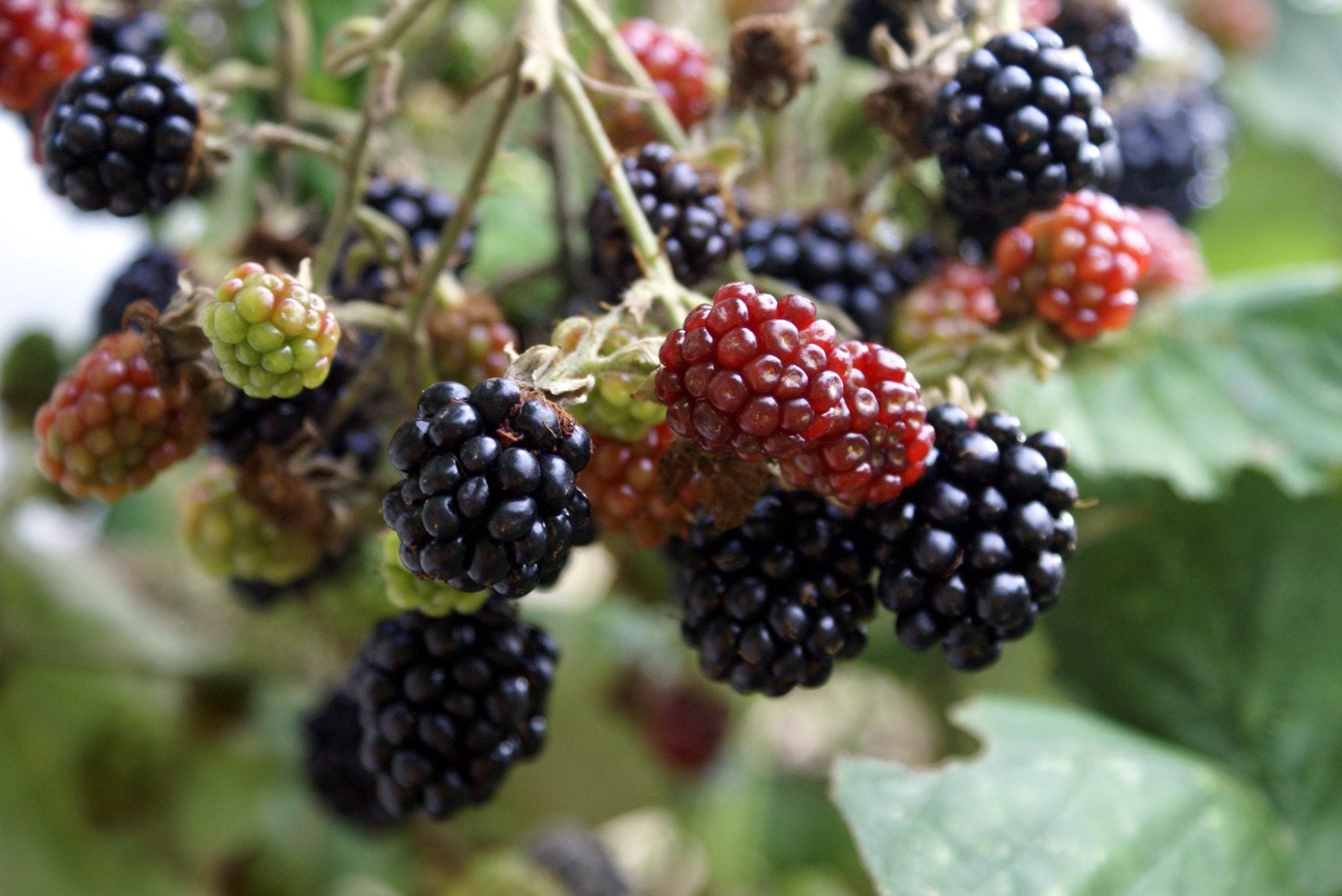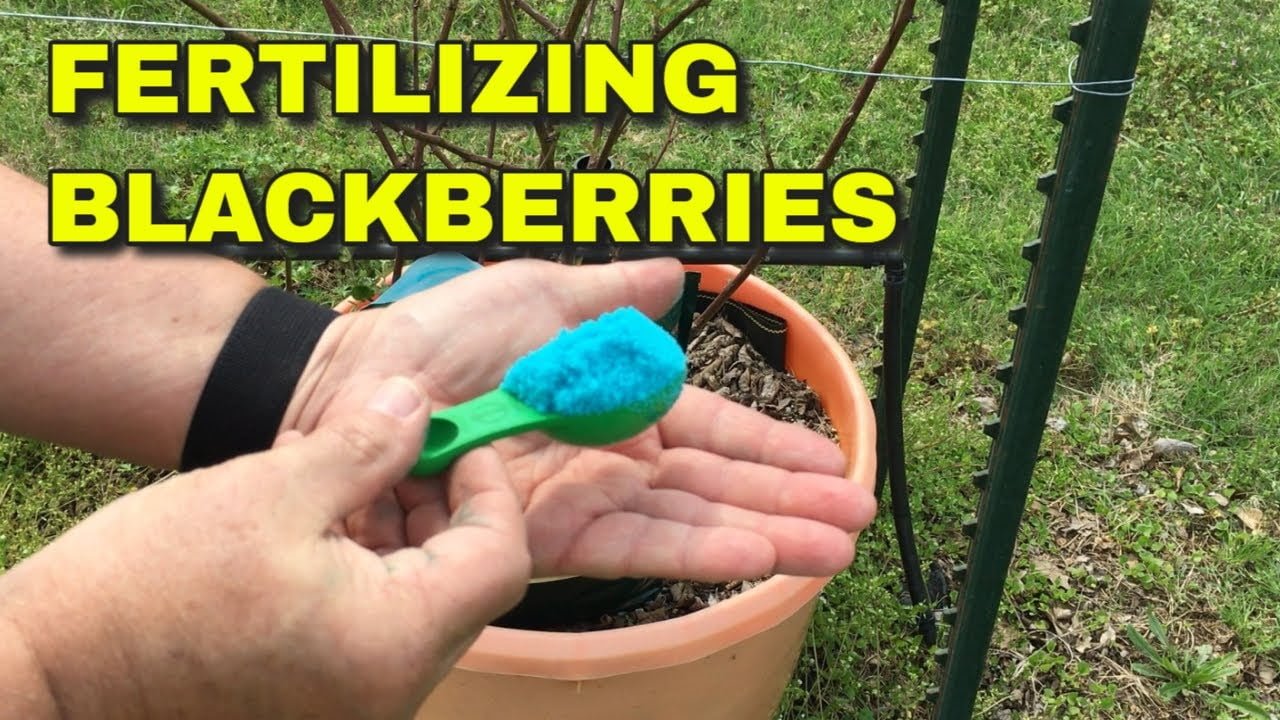Blackberries are a delicious and nutritious fruit that can be grown in your own backyard. To ensure a plentiful harvest, it is crucial to understand the proper techniques for fertilizing blackberry plants. This article will provide you with valuable insights and step-by-step instructions on how to effectively fertilize your blackberries, maximizing their growth and fruit production. By following these expert tips, you will be well-equipped to nourish your blackberry plants and reap the rewards of a bountiful crop.

Choosing the Right Fertilizer
Understanding Nutrient Requirements
Before fertilizing your blackberries, it’s important to understand their nutrient requirements. Blackberries typically require balanced amounts of nitrogen (N), phosphorus (P), and potassium (K) to thrive. Nitrogen is important for promoting lush leaf growth and overall plant vigor. Phosphorus aids in root development, flowering, and fruit set. Potassium helps with disease resistance, fruit quality, and winter hardiness.
NPK Ratios and Fertilizer Types
When selecting a fertilizer for your blackberries, pay attention to the NPK ratio listed on the packaging. The NPK ratio provides the percentage of nitrogen, phosphorus, and potassium in the fertilizer, respectively. For blackberries, a balanced NPK ratio such as 10-10-10 or 14-14-14 is generally suitable. However, if your soil already has sufficient levels of certain nutrients, you may need to choose a fertilizer with a higher ratio of the nutrient in which your soil is deficient.
Fertilizers come in two main types: organic and synthetic. Organic fertilizers are derived from natural sources such as compost, manure, or bone meal. They provide a slow-release of nutrients and improve soil structure over time. Synthetic fertilizers, on the other hand, are manufactured and provide nutrients in a concentrated form. They are quickly absorbed by plants but typically do not contribute to long-term soil health. Consider the pros and cons of each type before making a decision.
Organic vs. Synthetic Fertilizers
When deciding between organic and synthetic fertilizers for your blackberries, it’s important to weigh the benefits and drawbacks of each. Organic fertilizers do not pose the risk of chemical burn or harm to beneficial organisms in the soil. They also improve soil structure and fertility over time. However, they may take longer to show results and may not provide all the necessary nutrients in the desired ratios.
Synthetic fertilizers, on the other hand, provide a quick source of nutrients and allow for precise control of nutrient ratios. They can be easily adjusted to meet the specific needs of your blackberries. However, they can be harmful to the environment if not applied correctly and may contribute to nutrient imbalances or soil depletion over time. Consider your goals, preferences, and the specific needs of your blackberries when choosing between the two.
Determining the Fertilizer Application Timing
Spring Pre-Planting Fertilization
As part of your blackberry fertilization routine, consider applying fertilizer in the spring before planting new plants. Pre-planting fertilization provides essential nutrients for establishing a strong root system and encouraging healthy growth. Apply the fertilizer evenly across the planting area, following the recommended fertilizer rate based on the specific type and age of your blackberries.
Annual Fertilization Schedule
In addition to pre-planting fertilization, blackberries benefit from regular annual fertilization. The frequency and timing of this fertilization depend on your specific location, soil conditions, and the age of your blackberry plants. Generally, a balanced fertilizer can be applied in early spring before new growth emerges and again in early summer to support fruit development. Follow the recommended rates and timing provided on the fertilizer packaging or consult with a local horticultural expert for tailored advice.
Post-Harvest Fertilization
After harvesting your blackberries, they may benefit from a post-harvest fertilization to replenish nutrients and support future growth. Apply a balanced fertilizer at a reduced rate compared to the spring and summer applications. This post-harvest fertilization helps prepare the plants for the following growing season and ensures they have the necessary nutrients to recover and produce another round of delicious blackberries.

Preparing the Soil for Fertilization
Soil Testing
Before applying any fertilizer, it’s essential to conduct a soil test to determine the current nutrient levels and pH of your soil. A soil test will provide valuable information about the specific needs of your blackberries and help you make informed decisions regarding fertilizer application. Contact your local agricultural extension office or a reputable soil testing laboratory to obtain a soil testing kit and follow the instructions for collecting a representative soil sample. The test results will indicate any nutrient deficiencies or excessive levels, allowing you to tailor your fertilizer application accordingly.
pH Adjustment
Blackberries prefer slightly acidic soil with a pH range of 5.5 to 6.5. If your soil’s pH falls outside this range, you may need to adjust it before applying fertilizer. Soil pH affects nutrient availability to plants, and proper adjustment ensures your blackberries can take up nutrients efficiently. To raise the pH, incorporate lime into the soil according to the recommendations provided in your soil test results. Alternatively, if the pH is too high, you can lower it by adding sulfur or other acidifying materials. Regular soil testing will help you monitor and maintain the appropriate pH level for optimal plant growth.
Improving Soil Drainage
Good soil drainage is crucial for the overall health of your blackberries. Excess water retention can lead to root rot and other diseases. Before applying fertilizer, ensure that the soil has proper drainage by addressing any issues with compaction, poor soil structure, or inadequate slope. Consider incorporating organic matter such as compost or well-rotted manure to improve soil structure and drainage capabilities. If necessary, you can also create raised beds or install drainage systems to prevent waterlogging and promote healthy root growth.
Calculating Fertilizer Application Rates
Fertilizer Recommendations
To determine the appropriate fertilizer application rate for your blackberries, consider the recommendations provided by your soil test results or consult with a local agricultural expert. Fertilizer recommendations take into account the specific nutrient needs of blackberries, existing nutrient levels in the soil, and the desired growth goals. The recommendations will indicate the amount of fertilizer needed to supply the required nutrients for optimal plant growth and fruit production.
Understanding Label Instructions
When selecting a fertilizer, carefully read and understand the instructions provided on the label. The label will provide detailed information about the recommended application rate, frequency, and any additional precautions or considerations. Pay attention to the NPK ratio, as well as any secondary or micronutrients included in the fertilizer. These instructions will ensure that you apply the fertilizer correctly and avoid over or under-application.
Adjusting Rates for Soil Conditions
While following the recommended rates is crucial, it’s equally important to consider the specific soil conditions in your blackberry planting area. Factors such as soil texture, organic matter content, and drainage capabilities can affect the nutrient-holding capacity of the soil. Adjusting the fertilizer application rate based on these soil conditions can help prevent nutrient deficiencies or excessive nutrient levels. Be mindful of the unique characteristics of your soil and make necessary adjustments to ensure optimal nutrient availability to your blackberries.

Applying Fertilizer
Broadcast Application
Broadcast application involves spreading the fertilizer uniformly over the entire blackberry planting area. This method is suitable for established blackberry patches or large-scale plantings. Use a handheld spreader, mechanical spreader, or a similar tool to evenly distribute the fertilizer across the soil surface. Avoid application near the plant crowns or stems to prevent burning or damage to the plants. After applying the fertilizer, lightly incorporate it into the soil using a rake or a shallow cultivation to promote nutrient uptake.
Band Placement
Band placement involves applying the fertilizer in a narrow band along the planting row or directly around individual blackberry plants. This method is particularly useful for young or newly planted blackberries, ensuring that nutrients are concentrated around the root zone. Use a small shovel or hand trowel to dig a shallow trench along the row, placing the fertilizer in the bottom of the trench. Cover the fertilizer with soil, taking care not to bury the blackberry stems or crowns. This method provides targeted nutrient delivery and reduces the risk of nutrient runoff or wasted fertilizer.
Foliar Application
Foliar application involves spraying a diluted fertilizer solution directly onto the leaves of the blackberry plants. This method allows for rapid nutrient absorption through the leaves, providing a quick boost of essential elements. However, foliar application is not a replacement for soil-applied fertilizer and should be used as a supplemental option. Follow the instructions provided on the fertilizer label for dilution rates and application timing. Take caution not to apply the solution during hot, sunny periods or when the plants are stressed, as it may cause leaf burn.
Mulching to Retain Fertilizer
Benefits of Mulching
Mulching around your blackberry plants offers numerous benefits in addition to retaining fertilizer. Mulch helps conserve soil moisture, suppresses weed growth, regulates soil temperature, and improves overall soil health. Furthermore, organic mulches gradually decompose, adding organic matter to the soil and enhancing its nutrient-holding capacity. As a result, blackberries can access nutrients more efficiently, reducing the need for excessive fertilizer applications.
Using Organic Mulch
When selecting mulch for your blackberries, organic materials such as straw, wood chips, or compost are highly recommended. Organic mulches provide the additional benefit of gradually releasing nutrients as they decompose, enriching the soil over time. Apply a layer of mulch around the base of the blackberry plants, ensuring that it does not touch the stems to prevent moisture-related diseases. Maintain a depth of 2 to 4 inches, replenishing the mulch as needed to maintain its effectiveness.
Applying Mulch Properly
To apply mulch effectively, remove any weeds or grass from the planting area before spreading the mulch. Water the soil thoroughly to ensure it is moist, then spread the mulch evenly around the base of the blackberry plants. Take care to leave a small gap between the mulch and the stems to allow for airflow and minimize the risk of fungal diseases. Mulch should extend out to the drip line of the blackberry plants, covering the soil surface to provide maximum benefits. Regularly monitor the mulch layer and replenish as necessary.

Irrigation Practices for Fertilizer Efficiency
Drip Irrigation
Drip irrigation is a highly efficient method of delivering water and nutrients directly to the root zone of blackberry plants. By providing water and fertilizer directly to the roots, drip irrigation minimizes water loss through evaporation and reduces the risk of nutrient runoff. Install a drip irrigation system in your blackberry planting area, ensuring that each plant receives a constant supply of water and nutrients. Drip irrigation also helps prevent wetting the foliage, reducing the potential for certain fungal diseases.
Timing and Frequency of Irrigation
The timing and frequency of irrigation play a vital role in fertilizer efficiency. Blackberries generally require about 1 to 2 inches of water per week during the growing season, depending on weather conditions and soil moisture levels. Divide the total weekly water requirement into multiple irrigation sessions to ensure the water infiltrates deeply into the root zone. Watering in the morning allows the foliage to dry before evening, minimizing the risk of disease. Additionally, adjust the irrigation schedule based on rainfall and monitor soil moisture to avoid over or underwatering.
Avoiding Overwatering
While maintaining adequate soil moisture is important for blackberry growth, overwatering can lead to nutrient leaching and negatively impact fertilizer efficiency. Overwatering can cause nutrients to be washed away from the root zone, rendering them unavailable to the plants. Ensure that your irrigation system delivers water evenly and does not leave areas excessively saturated or waterlogged. Monitor the moisture content of the soil regularly, using a moisture meter or observing the plant’s water needs, to avoid overwatering and maximize nutrient uptake.
Monitoring and Adjusting Fertilization
Plant Health Observation
Regular observation of your blackberry plants’ health is crucial for monitoring fertilization effectiveness. Keep an eye out for any signs of nutrient deficiencies or excessive nutrient levels, such as yellowing leaves, stunted growth, or unusual discoloration. If you notice any issues, consider adjusting your fertilization practices accordingly. However, keep in mind that certain stress factors, diseases, or pests can also cause similar symptoms, so consider other factors before attributing them solely to fertilization.
Leaf Tissue Analysis
Leaf tissue analysis is a valuable tool for assessing the nutrient status of your blackberry plants. By analyzing the nutrient composition of the leaves, you can identify any specific deficiencies or imbalances and make targeted fertilization adjustments. Consult with a local agricultural extension office or a professional lab to obtain leaf tissue analysis services. Collect leaf samples following the recommended guidelines, and submit them for analysis. The test results will provide precise information about your blackberries’ nutrient needs, allowing you to optimize fertilization practices.
Recognizing Over-fertilization and Deficiencies
Over-fertilization can have detrimental effects on your blackberry plants and the environment. Symptoms of over-fertilization include excessive vegetative growth, leaf burn, increased susceptibility to diseases, or nutrient imbalances. If you suspect over-fertilization, reduce or adjust future fertilizer applications accordingly. On the other hand, ongoing nutrient deficiencies can result in weak, unproductive plants. Monitor the health and growth of your blackberries regularly, and address any deficiencies by adjusting fertilization rates or using targeted fertilizers to correct the specific nutrient imbalance.

Potential Fertilizer Problems
Fertilizer Burn
Fertilizer burn occurs when excessive amounts of fertilizer come into direct contact with plant roots or foliage, causing tissue damage. To avoid fertilizer burn, always follow the recommended application rates and instructions provided on the fertilizer packaging. When broadcasting fertilizer, take care not to apply it too close to the blackberry stems or crowns. Additionally, water the plants after applying fertilizer to help dissolve and distribute the nutrients without overwhelming the plants. Proper application techniques and prudent use of fertilizers will minimize the risk of fertilizer burn.
Nutrient Imbalances
Applying fertilizers without considering the specific nutrient requirements of your blackberries can lead to nutrient imbalances. Nutrient imbalances occur when certain nutrients are present in excessive or deficient amounts compared to the plant’s needs. These imbalances can result in reduced plant vigor, poor fruit quality, or increased susceptibility to diseases. Regular soil testing, leaf tissue analysis, and careful application of fertilizers based on your blackberries’ requirements will help maintain proper nutrient balance and prevent imbalances from occurring.
Environmental Concerns
Improper use or excessive application of fertilizers can have negative environmental impacts. Fertilizers may contribute to water pollution if they are not absorbed by plants entirely and are washed away into waterways through runoff. To minimize environmental concerns, avoid applying fertilizers near water bodies, follow recommended application rates, and choose slow-release or organic fertilizers when possible. Understanding the specific needs of your blackberry plants and the characteristics of your planting area will help minimize the environmental impact of fertilization practices.
Alternative Fertilizer Options
Compost
Compost can serve as an excellent alternative or supplement to traditional fertilizers for blackberries. Composting organic materials, such as kitchen scraps, yard waste, or plant trimmings, produces nutrient-rich humus that improves soil structure and fertility. Spread a layer of compost around the base of your blackberry plants, taking care not to pile it against the stems. Over time, the compost will break down, slowly releasing nutrients and enhancing the overall health and productivity of your blackberries.
Companion Planting
Companion planting involves strategically planting beneficial plants alongside blackberries to improve nutrient availability and create a more balanced ecosystem. Certain plants, such as legumes or nitrogen-fixing cover crops like clover, can help increase nitrogen levels in the soil. Other plants, like aromatic herbs, can repel pests or attract beneficial insects. Consider incorporating companion plants in your blackberry patch to enhance soil fertility naturally and promote a healthier growing environment.
Cover Crops
Cover crops are crops specifically grown to suppress weeds, improve soil health, and increase nutrient availability. Planting cover crops in the offseason or between blackberry rows can help prevent soil erosion, reduce weed pressure, and add organic matter to the soil. Legume cover crops, such as hairy vetch or crimson clover, can also fix nitrogen from the atmosphere, enriching the soil naturally. When the cover crops reach maturity, you can incorporate them into the soil as green manure or allow them to decompose on the surface, providing a nutrient-rich mulch for your blackberries.
By following these guidelines and implementing appropriate fertilization practices, you can ensure the health, vigor, and productivity of your blackberry plants. Understanding the nutrient requirements, choosing the right fertilizer, adjusting application rates, and monitoring for any issues will help you maintain optimal nutrient levels and create a favorable growing environment for your blackberries. With the proper fertilization techniques and a balanced approach, you can enjoy bountiful harvests of delicious, juicy blackberries year after year.



